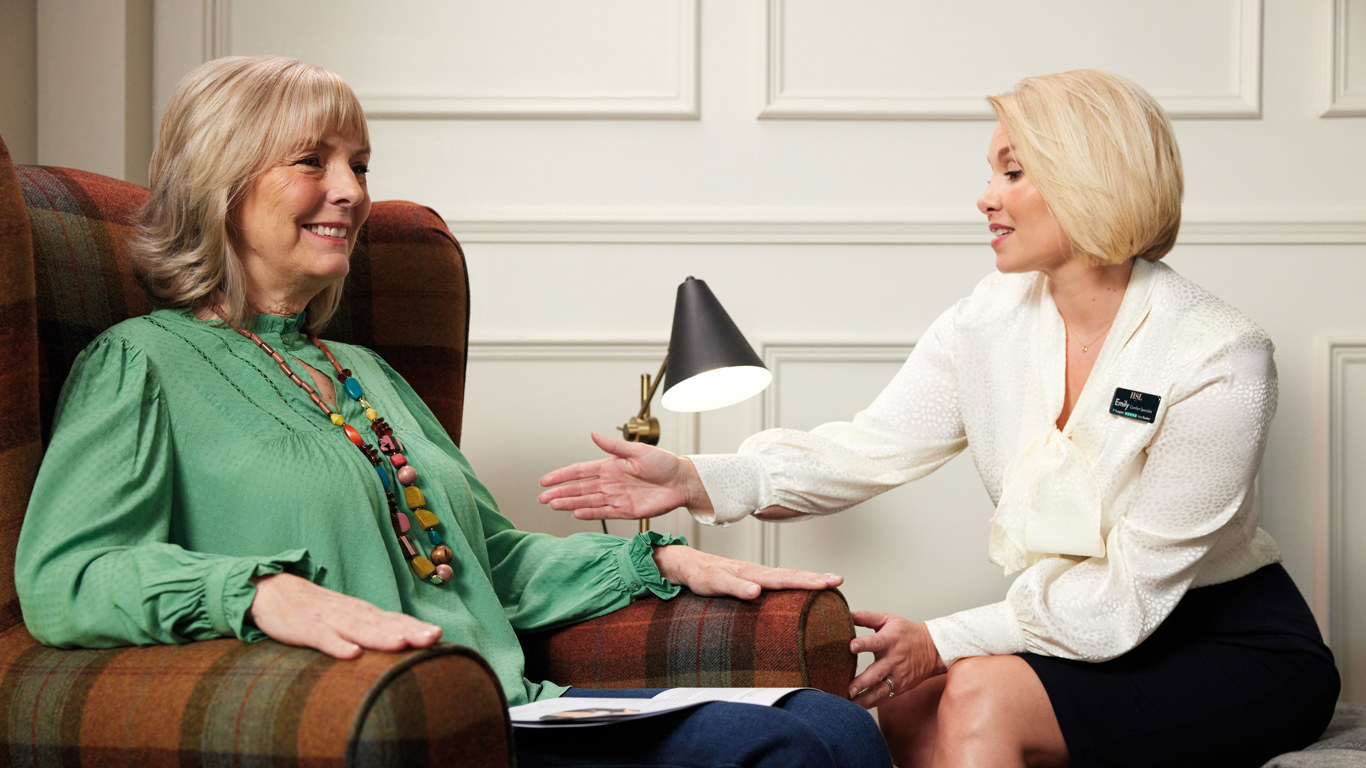Feel good furniture is comfortable because it fits you.
Getting the right level of postural support and comfort can only be achieved through furniture that’s designed to fit you. That’s why at HSL, our beautifully handcrafted chairs and sofas are available in multiple sizes, along with a wealth of stunning fabrics and leathers; making your furniture as unique as you.

Feel good furniture is comfortable because it fits you.
When we are children, we have our feet measured to ensure that our shoes are the right size so that they are comfortable. At HSL, we take the same approach to our furniture. Our Exclusive Chair Fitting service ensures that each point of the body is supported to maximise comfort and overall wellbeing.
We have worked closely with our independent Occupational Therapist, Julie Jennings Dip COT HCPC, to develop a unique Chair Fitting service.
When you visit one of our showrooms or arrange a home visit, our friendly Comfort Specialists will be on hand to guide you through an Exclusive Chair Fitting at your leisure. Our experienced colleagues have also been trained by independent Occupational Therapist, Julie Jennings Dip COT HCPC, so they understand and can advise upon the importance of good posture and how it will benefit your overall comfort and wellbeing.
What to expect...
- Once you have found a piece of furniture which you are interested in, our Comfort Specialist will ask you to take a seat on one of the sizes we offer.
- Our Comfort Specialist will give you a copy of our Exclusive Chair Fitting Guide before conducting your personalised chair fitting.
- The Comfort Specialist will talk you through the guide, explaining the importance of each point of contact between the chair and the body in detail.
- Your Exclusive Chair Fitting is personalised to you, so the Comfort Specialist will ask you for some information throughout the assessment to make sure the furniture is supporting you as it should.
- Our Comfort Specialist will then be able to recommend the comfort solution best suited to you and your posture.
Visit your local showroom, arrange a home visit or call our friendly customer care team to learn more.
Call us. We're here to help
Our comfort specialists will help you to find your perfect furniture in the size and style that’s right for you.Sign up for our newsletter
Sign up for our newsletter to hear about our exciting new collections, interior trends, wellbeing advice as well as exclusive offers.



